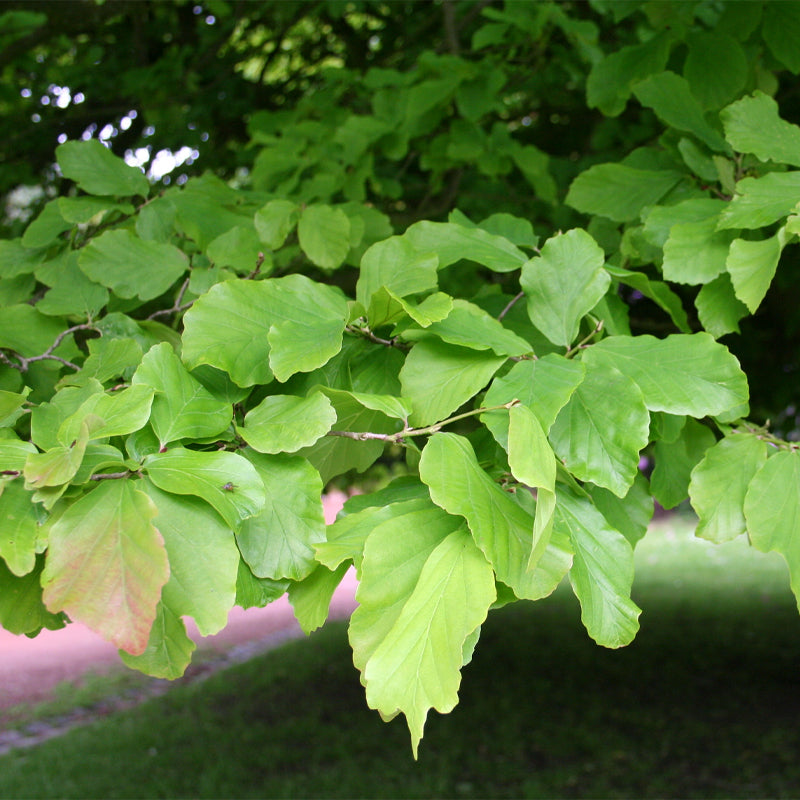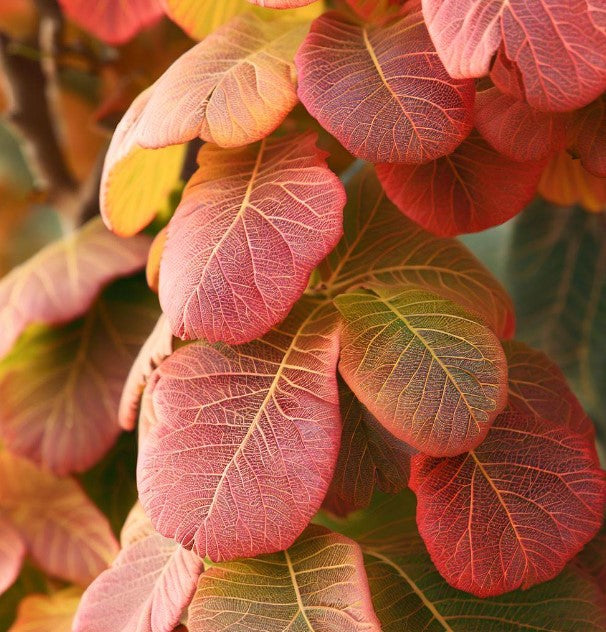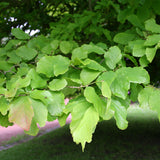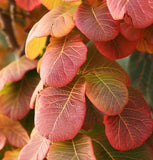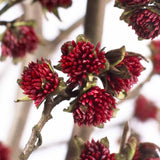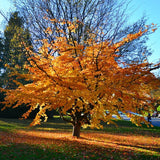Parrotia persica (Persian Ironwood)
Parrotia persica (Persian Ironwood) is a deciduous tree that is native to Iran and the Caucasus region. It is highly regarded for its attractive foliage, showy flowers, and colorful bark. The Persian Ironwood is a medium-sized tree that typically reaches a height of 20 to 40 feet (6 to 12 meters) with a similar spread. It has a rounded to spreading crown and a moderate growth rate. The bark of mature trees is smooth and exfoliates in patches, revealing a mosaic of colors including gray, cream, green, and brown. This adds visual interest to the tree, especially during winter.
Foliage: The leaves of Parrotia persica are one of its most distinctive features. They are alternate, oval to lance-shaped, and have wavy or slightly toothed margins. The leaves emerge in spring with a reddish-purple color, turn dark green during summer, and transform into shades of yellow, orange, and red in autumn. The fall foliage can be quite striking, offering a colorful display in the landscape.
Flowers: The Persian Ironwood produces small, crimson-red flowers in late winter to early spring. The flowers are clustered together in small, pendulous structures known as catkins. Although individually inconspicuous, the abundance of flowers creates an attractive floral display. The early bloom time makes it a valuable tree for providing early-season nectar for pollinators.
Habitat and growing conditions: Parrotia persica thrives in well-drained soils and prefers full sun to partial shade. It is adaptable to various soil types but performs best in moist, fertile soils. The tree is known for its tolerance to urban conditions, including air pollution and compacted soil. It is hardy in USDA hardiness zones 4 to 8.
Maintenance: Parrotia persica is relatively low-maintenance once established. It requires regular watering during the establishment phase but becomes more drought-tolerant as it matures. Pruning is generally not required except for removing any dead, damaged, or crossing branches. Mulching around the base of the tree helps retain moisture and suppress weed growth.
Botanical Name : Parrotia persica
Common Name : Persian Ironwood
Height : 30-40 ft
Spread : 15- 20 ft
Germination Info : Germination info: Warm stratify 30-60 days followed by a cold stratification of 60-90 days
Hardiness zone : 4-8
Average seed per ounce : Approx. 531


